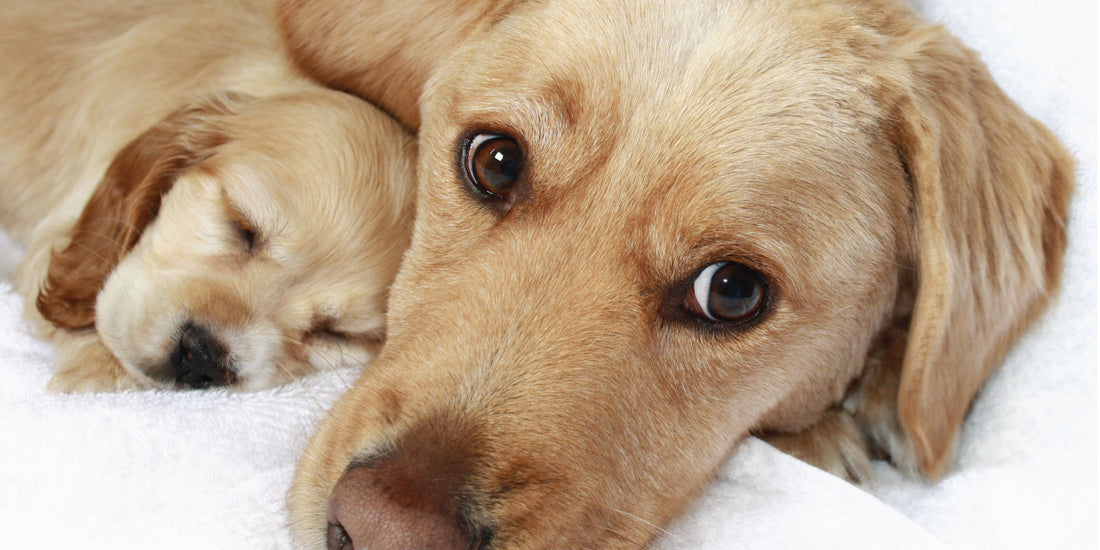Oh that cute puppy. So sweet, so fun to play with, and so hard to train and house break! Its time for Crate Training 101.
A word of caution, though, if not done correctly, the crate can become an object of stress for your puppy. The crate won't train your puppy for youas his new pack leader, he wants to follow you and be with you, so you'll have to guide him to use it. Learn the healthy and effective way to use the crate and eliminate the instances of "cute messes" in your home.
The crate is a great way to create a "den" for your puppy. A safe and comfortable place for him to sleep.
Why Crate Training?
Your puppy is a den animal. His natural instincts incline him to sleep in confined spaces. Using a crate can be a great way to accomplish house training by taking advantage of your dogs natural tendency to sleep in enclosed places. The idea behind house training through crate training is to create a safe "den" for your dogand dog's don't like to soil their dens. Here how to get started with crate training for your puppy:
Crate Training Basics
- Get a large enough crate for your puppy to move around in (stand, turn around, stretch, etc). Think ahead and get one that allows for growth.
- Place the crate in a corner somewhere, but not far from the family action. Drape a cloth partially over to make it a little cozier.
- Realize the crate is not for use as a bathroom. The primary idea is get the puppy housebroken in a fast and healthy way. Dont put down paper in the crate. Many will also have a playpen area for their dog where they do have paper put down just in case of an emergency.
- When your dog is in the crate, it should be equipped with a bed of sorts, a chew toy and some water.
- Feed your dog in the crate with the door open.
- Dont leave your puppy in the crate more than a couple hours at a time (except overnight). If you do, you probably will have one stressed out puppy.
- Most experts will suggest you leave the crate door open until the puppy is 11 to 12 weeks old.
Crate Training at Night
- Know beforehand where you want to have your puppy's crate at night.
- Likely, the puppy will cry or feel overly stressed if you immediately put him in the crate and leave him far away from you. For this reason, you may bring your puppy's crate in your bedroom. If he is under 12 weeks, leave the crate door open. Let him sleep in the crate in your bedroom for a couple nights to get him acclimated to sleeping in the crate.
- Over a couple weeks, move the puppy's crate away from your bedroom in stagescloser to the spot where you want your puppy to sleep permanently.
- In the morning, bring the crate back to the spot that you want like the crate to end up permanently.
What to Expect When Crate Training
Over time, your dog will get used to the crate and go in there on their own to nap during the day. When they wake up you dont want to rush to get them out. Also, avoid acting distressed as your puppy will take notice and learn that this is appropriate. Its best if you casually take your puppy out of the crate by waiting about 1-2 minutes and then gradually increasing those intervals.
Other Necessary Steps in Crate Training Your Puppy
- No FreeFeeding. Make feeding routine 3 times per day at the same time everyday. Give adequate time to eat (approximately 10-15 min), but once that expires, pick up the foodmeal time is over. By routine feeding, you also help your puppy to eliminate on schedule as well.
- Don't Rush Your Puppy. Lead your dog to the outside bathroom spot that you have targeted. Once your puppy eliminates or urinates, dont immediately bring them in. Dogs like being outside, so if they get conditioned that they have to go inside right after they relieve themselves, they wont do itthey will do their "business" inside the house. Take them out, and make it fun and dont be in a rush. If your dog doesnt go after 5-6 minutes, take them back in the crate for 20-30 minutes and try again.
-
Use Instructive Reprimands
- When your dog fails to eliminate in the targeted spot say, outside, they will learn what that means and the correlation eventually.
- Come up with terms that you use every time one for urination (example: pee or wee") and one for defecation (We'll leave that to you).
All of these steps along with the crate training help to teach your dog the appropriate and desired behaviors around sleep time and potty time that will help make for a happy family addition.



